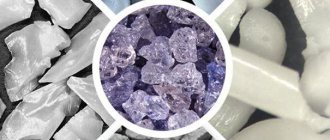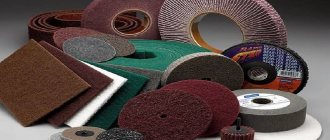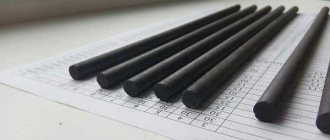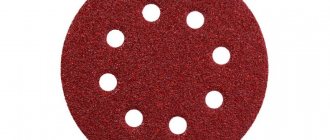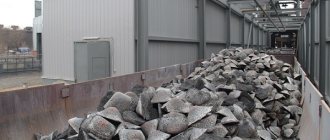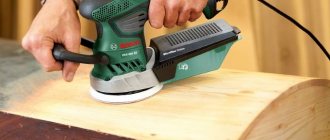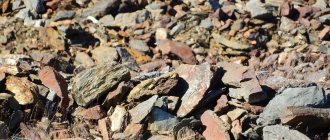What are abrasives
Abrasives
- these are materials characterized by hardness that is superior to other types of materials (even metals). These are solid small particles used in free or bound form (for example, in the form of some form, fixed on a surface, etc.).
Abrasives are designed for mechanical processing of various materials, removing the thinnest layer from them with sharp protrusions of their particles. In fact, any hard structure has abrasive properties in relation to a less hard one. However, only specific types of abrasive materials are used on an industrial scale.
Abrasive cutting tool
Abrasive cutting tools are used on grinding group machines.
An abrasive tool is a body of a certain geometric shape, consisting (or containing a working layer) of abrasive grains held together by a binder.
Abrasive tools include grinding wheels, grinding heads, bars, segments, abrasive belts
.
Advantages of abrasive tools compared to blade ones: high
precision processing, low roughness of the machined surface, the ability to process hard materials and hardened metals.
Flaws:
reduction in the performance properties of the surface layer of parts due to high tensile stresses, burns and carving of the treated surface with abrasive waste. To reduce the negative impact of these factors, processing is carried out at a small depth of cut, with an abundant supply of coolant to the cutting zone.
| Rice. 41. Main types of grinding: a) – cylindrical grinding with longitudinal feed; b) – cylindrical grinding with transverse feed; c) – flat grinding with the periphery of the wheel; d) – flat grinding with the end of a wheel |
| A). |
| b). |
| V). |
| G). |
Grinding wheels
Of all types of abrasive tools, grinding wheels are the most common. They are bodies of rotation of various profiles. There are 17 types of grinding wheels. They are shown in Fig. 7.7.1.
Depending on the shape and purpose of the circles
There are flat straight profiles (PP, the most common), flat with cylindrical and conical grooves (PV, PVD, PVK, PVKD), flat with two- and one-sided conical profiles (2P, 3P, 4P), disks (D), rings ( 1K, 2K), cylindrical cups (CHC) and conical cups (CHK), plates with different profile angles (1T, 2T, 3T) and special-purpose circles: (S, I, Ks, M).
PP and PV wheels are used for external, internal, centerless and flat circular grinding. Cylindrical grooves on one or both sides (PV, PVD) are made when clamping flanges may interfere with bringing the wheel to the grinding zone. Conical grooves in flat PVK and PVKD wheels serve to reduce the contact area of the side surface of the wheel with the workpiece when grinding shoulders, which reduces heat generation and improves the quality of the ground surface. Flat wheels with a conical profile (2P, 3P, 4P) are used when there is limited space in the grinding zone for sharpening multi-edged tools.
Rice. 7.7.1. Grinding wheels
Discs (D) are made thin 0.5–5 mm, with a diameter of 80–500 mm and are used for cutting workpieces, cutting grooves and grinding deep grooves. Rings (1K and 2K) are used for surface grinding. They are attached to the faceplate of the grinding machine with a cementitious substance. The 2K shape provides a more secure fit. ChTs and ChK wheels are used for sharpening tools and for surface grinding. Discs 1T, 2T, 3T are used for sharpening cutting tools when the free space in the grinding zone is sharply limited: 1T - for sharpening the front surface of cutter teeth, 2T - for sharpening hobs, narrower 3T - for grinding cutters and cylindrical gears.
Special wheels are named according to the type of work: C - for grinding gauge brackets, I - for sharpening needles, Ks - for sharpening mower knives, M - for cutting minerals.
Grinding heads
Grinding heads are small grinding wheels. There are seven types of grinding heads, the main ones are shown in Fig. 7.7.2.
Rice. 7.7.2. Grinding heads Fig. 7.7.3. Sanding segments
They are used for internal grinding, as well as for processing shaped surfaces and deburring. The head is secured to the machine spindle using a threaded rod. At the other end, the pin has a notch that fits into a blind hole in the head and is fixed with an adhesive.
Sanding segments
Large grinding wheels are made into a prefabricated structure consisting of several segments. The segments are clamped in the sockets of the chuck, which is mounted on the machine spindle. Once secured, the segments form a discontinuous flat annular surface. Segments of various shapes are made: flat, convex-concave, etc. In Fig. 7.7.3 shows the main types of grinding segments.
The different shapes and sizes of the segments are due to the existing housing designs for their fastening. Segment wheels are used for flat face grinding of large parts.
Abrasive stones, tapes and sandpapers. Diamond wheels
A whetstone is an abrasive tool that has the same profile along its length. The bars are made square, flat, triangular, round, semicircular with a diameter of 2–90 mm and a length of up to 200 mm. They are used for metalwork, for honing and superfinishing heads.
Tapes and sandpapers are an abrasive tool, which is a thin flexible base with a layer of abrasive grain attached to it. The base is a metal tape, fabric or paper. The abrasive grains are fixed with hide glue, technical casein, YAN-153 varnish or PFSh-4 synthetic varnish. Sanding with belts is carried out on special machines, with sandpapers - on machines and manually.
Diamond wheels are produced in 16 types. Their shapes and designations are the same as abrasive wheels, only the letters A are placed in front for natural diamonds and AS for synthetic diamonds, for example, APP, AChK, ASPP, ASCHK, etc. The thickness of the diamond-bearing layer on the wheel is 1–5 mm .
Marking of grinding wheels
The marking includes the main characteristics of the circle. For example, marking
PP–500´50´305–14А–25–С2–7–К5–35 m/s
deciphered as follows:
PP
– circle shape (flat straight profile, see Fig. 7.7.1).
500´50´305
– overall dimensions of the circle (outer diameter 500 mm, internal bore diameter 305 mm, circle width 50 mm).
14A
– type of abrasive material (normal electrocorundum grade 14A). Normal electrocorundum (grades 12A ... 16A), white electrocorundum (grades 22A ... 25A), alloyed electrocorundum (grades 32A ... 34A, 37A, 38A), monocorundum (grades 43A ... 45A), black silicon carbide (grades 52С…55С), green silicon carbide (grades 62С…64С), natural and synthetic diamonds (grades ASO, ASR, ASV, ASK, ACC, ASM, ASN), elbor and other materials.
25
– grit size of the grinding wheel (number 25, grinding grains, grain size of the main fraction 250 microns). Grain size characterizes the grain size. There are 26 grit numbers for all abrasives except diamond. The size of abrasive grains and their designation are given in table. 7.7.1. For diamond grains, another designation for grain size is accepted in the form of a fraction, in which the numerator corresponds to the largest, and the denominator to the smallest size of the main grain fraction in microns. The size of diamond grains and their designation are given in table. 7.7.2.
Table 7.7.1. The size of abrasive grains and their designation
| Number interval | 200…16 | 12…3 | M40…M5 |
| Grain size of the main fraction | 2000…160 µm | 125…28 µm | 40…3 µm |
| Name of grains | Grinding grains | Sanding powders | Micropowders |
Table 7.7.2. Diamond grain size and their designation
| Grain size range | from 630/500 to 50/40 µm | from 60/40 to 1/0 µm |
| Name of grains | Sanding powders | Micropowders |
C2
– degree of hardness of the wheel (medium hardness class). The hardness of an abrasive tool refers to the resistance of the bond to tearing out abrasive grains by external force. 7 hardness classes have been established, which are given in table. 7.7.3.
Table 7.7.3. Abrasive tool hardness
| Hardness class | Designations |
| Soft | M1, M2, M3 |
| Medium soft | SM1, SM2 |
| Average | C1, C2 |
| Medium-hard | ST1, ST2, ST3 |
| Solid | T1, T2 |
| Very hard | VT1, VT2 |
| Extremely hard | CT1, CT2 |
7
– structure number (volume grain content in the circle 48%). The structure of an abrasive tool is the percentage ratio of the volumes occupied by abrasive grains, binders and pores. There are 12 main structure numbers. The greater the porosity of the circle corresponds to a larger number. The volume of the ligament also increases with increasing number. The basis of the structure designation system is the volumetric grain content in the tool, which is given in table. 7.7.4.
Table 7.7.4. Abrasive tool structures
| Structure Number |
| Volumetric grain content, % |
Structures No. 1...4 are called closed or dense, No. 5...8 - medium, No. 9...12 - open. When grinding at normal speeds (up to 35 m/s), wheels with closed structures are more often used, at higher speeds (35...50 m/s) wheels with medium structures are used, and at high speeds - with open structures.
K5
– type of wheel bonding material (ceramic bonding grade K5).
The binder can be
inorganic, organic and metallic
.
Of the inorganic binders, the most widely used are ceramic (C) and silicate (S) binders.
The most common organic binders are bakelite (B) and vulcanite (V) binders. Bakelite is a synthetic resin. Vulcanite is a synthetic rubber that has been vulcanized. Glyphthalic binder (GF) is also used, which is a synthetic resin consisting of glycerin and phthalic anhydride.
Metal binders (M) consist of a metal base (tin, aluminum, copper powders) and a filler. They are usually used in diamond wheels, as they hold the grains more firmly and allow the cutting properties of diamonds to be more fully used;
35 m/s
– permissible peripheral cutting speed during grinding. The maximum speed of rotation of the wheel depends on the type of abrasive material and type of bond, the material being processed and the nature of the processing (type of grinding, depth of cut, feed, etc.). It is limited primarily by the tensile strength of the circle. On wheels with a diameter of more than 150 mm, the maximum peripheral speed must be indicated. If the speed is not indicated on the wheel, then for wheels on ceramic and bakelite bonds it should not exceed 35 m/s, on vulcanite bonds - 40 m/s. Any wheel must be tested at 1.5 times the maximum rotation speed before use.
Abrasive processing of materials
Special abrasive tools are made from abrasives. They, unlike blade (metal) ones, do not have a continuous cutting edge. This function is performed by a solid grain structure, each of the grains is a cutter in it. These abrasive particles are bonded to each other with a binder or combined into some kind of product (it can be a wheel, a stone, sandpaper, a brush), and collectively act on the working surface with their cutting edges, removing the finest chips with them (this layer can be as little as several microns).
Abrasive materials are in demand for different types of processing:
- grinding - can be round, flat, circles, tape, and also preliminary and finishing;
- lapping;
- water jet treatment;
- ultrasonic;
- sandblasting;
- polishing (sometimes preliminary, mirror);
- honing (this is the finishing treatment of internal cylindrical parts, such as automobile cylinders);
- superfinishing (involves minimal material removal);
- tumbling (this is the cleaning of small parts from scale, corrosion, burrs, etc.);
- cutting, cutting;
- sharpening
Abrasive machining tools on the Russian market
SAWS
UNITED
company sells
abrasive grinding tools and materials
. Andre Abrasives products traditionally occupy key positions in the line of offered grinding wheels. Our specialists are ready to select a high-quality product for the specific needs of the enterprise. To more comprehensively meet customer needs, we offer abrasive tools with different grain sizes, hardness, size and type of binder. Andre Abrasives products primarily use ceramic and bekelite-based technologies.
Andre products allow you to choose the optimal abrasive tool for sharpening band saws with both hardened and unhardened teeth. The ceramic bond on the wheel is suitable for a hardened tooth. A two-millimeter pink layer on a sandwich wheel measuring 150 * 6/4 * 32 allows you to sharpen a hardened tooth, after which, using a 4 mm gray layer, the body of the band saw is ground and the tooth profile is formed. For unhardened teeth, 127*6*12.7 wheels with a bakelite bond are more suitable.
Types of abrasives
Abrasive materials differ in different parameters. Thus, they are classified according to their hardness (there are soft, hard, super-hard), their chemical composition, and grain size (they can be large, medium, fine, extra fine).
Based on their origin, abrasives are classified into three types.
1. Natural (or natural) origin. These are sand, garnet, zirconium, etc.
2. Artificial (or synthetic, industrial) origin. These materials are manufactured specifically for abrasive processing. The most common are artificial diamond, silicon carbide, boron, electrocorundum, cubic boron nitrite.
3. Abrasives from production by-products: agricultural residues, slags from metal smelting (for example, nickel slag), from the operation of power plant boilers. These materials are available, have a variety of particle sizes, and are low in cost.
Natural abrasives
Let's look at some of the natural abrasives.
Diamond is the hardest of natural materials, consisting of pure carbon. In nature, it is found, as a rule, in the form of a scattering of crystals. Diamonds can be either jewelry or technical (they are used as abrasives).
Pomegranate
is a mineral consisting of aluminosilicates of lime, magnesia and other impurities. It can be painted in different colors, with the exception of blue. It is used in crushed form: the particles are applied to sandpaper for grinding.
Corundum
consists of crystalline aluminum oxide with impurities, differs in color from bluish to brown. In this case, the hardness of the material decreases with increasing content of iron oxide in it.
Emery
- a mixture of corundum grains with magnesite and other minerals.
Quartz
is silicon oxide in crystalline form. A variety of quartz is flint: it consists of silica and is found in nature in the form of massive rocks.
Pumice
- This is a porous structure of volcanic origin, consisting of silica and alumina.
Chalk
— calcium carbonate, with which fine types of processing (polishing, lapping) are possible.
Purpose of abrasive tools
Abrasive tools have found wide application in many areas of industry and everyday life. It is used in various processing of metal and non-metal surfaces, such as grinding, polishing, trimming, etc. Therefore, materials and devices with abrasive particles are used in the production of machines, instruments, machine tools, parts, bearings, household items (pumice stones and nail files), etc. This category is also actively used in construction work - to remove roughness, unevenness, scratches and chips from the coating.
Artificial abrasives
The artificial abrasive carborundum was first synthesized in 1891 by scientist-inventor Edward Acheson (USA). Today, there are a lot of abrasives of industrial origin, they are used more widely than natural ones. Let's look at the features of the most common of them.
Electrocorundum is produced by reduction smelting from bauxite in electric furnaces. The color of the abrasive varies from gray to red-brown. The material is used to produce a hard abrasive tool.
Silicon carbide is obtained by reducing silicic acid with carbon. The material is highly brittle and is used in powder form or as a tool for processing glass, porcelain and other fragile structures.
Boron carbide
- the hardest synthetic abrasive, used as a paste for grinding very hard surfaces.
Abrasive liquids
The percentage of solids in different abrasive products can vary significantly. Sometimes they are included in a liquid medium - in this case we are talking about an abrasive liquid. Examples are liquid cleaning products (household chemicals), paints containing quartz sand, sand suspensions, caustic sludge, food products (sugar suspensions, chocolate spreads with pieces of nuts), cosmetology (scrubs, abrasive toothpastes), etc. Of course, not all of them are used for surface treatment. Nevertheless, these media have abrasive properties, which must be taken into account when selecting equipment that works with them.
Read more about pumping abrasive liquids
can be read here:
https://www.arkronix.ru/fluid-types/abrazivnye-zhidkosti/
Purpose and types of grinding machines
There are quite a lot of varieties of modern grinding machines - surface grinding, cylindrical grinding, internal grinding, centerless grinding, belt grinding and honing machines are actively used in industry. Each of these types of grinding equipment has its own purpose and is used to process a specific group of parts.
In principle, the purpose of a particular grinding machine can be judged by its name. For example, a cylindrical grinding machine is used to process surfaces that have a cylindrical shape, a surface grinding machine easily copes with smooth surfaces, internal grinding machines process internal holes, and the field of activity of honing machines includes fine grinding, which is equated to the polishing process.
Most modern grinding machines are equipped with numerical software to achieve greater productivity and processing accuracy. Although the use of CNC automates the production process, it does not completely exclude human participation. In this regard, programmable grinding machines are the most capricious - the operator constantly has to monitor the process and make timely adjustments to the program for the rapidly wearing grinding wheel.
Properties of abrasive materials
Abrasives have a number of important characteristics, or properties. So, their important parameter is hardness. It is determined by the resistance of the material whose surface is subjected to grinding. Thus, the hardest abrasive material on the Mohs scale (named after the German mineral scientist) is diamond (10 points), boron carbide has 9.5 points, corundum, silicon carbide and electrocorundum - 9, quartz - 8, gypsum - 2, talc - 1 point.
Other properties of abrasives are strength, brittleness, and grain size (this is the size and shape of the grinding grain). Thus, the shape of the grains can be isometric (their height, width, thickness are approximately the same), xiphoid, lamellar - this indicator depends on the nature of the abrasive material and the degree of grinding of the original grain.
The abrasive ability of these substances (that is, their performance qualities) is determined by the mass of the layer of material removed during grinding.
Abrasives have the property of self-sharpening: they remain operational due to the formation of new protrusions, cutting edges near the grains during processing.
What materials is it made from?
In the process of manufacturing abrasive tools, natural and synthetic materials are used. Natural materials include: diamond, corundum, quartz, emery, pumice, sand, etc. Synthetic components are: silicon and boron carbide, electrocorundum, etc. Diamond is considered the hardest among natural components, and boron carbide among artificial ones.
Currently, synthetic substances are in greater demand than natural ones. This is due to the fact that artificial ones have proven to be of better quality and durability than natural ones.
Boron carbide is an alloy of boric acid and petroleum coke combined in an electric furnace. It is not part of the device itself, but is used only during its finishing process.
Diamond - in the manufacture of devices from this component, the diamond-shaped cubic allotropic form of elemental carbon is used. Carbonado and bead are considered the best. I also use powder and fragments of this mineral. This abrasive is used at the stage of processing hard stones, as well as when polishing and grinding the diamond itself.
Emery is obtained from a certain rock, which includes corundum and iron ore. Widely used in making skins. It is practically not used in grinding wheels and whetstones.
Corundum is an aluminum oxide. It is used in processes where there is no serious stress on the grains, since this type of natural compound is not characterized by high viscosity.
Quartz or quartz sand is crystallized silicic acid. Used in the production of main wheels for centerless grinding machines. Marked with the letter "P".
Electrocorundum is clay melted in an electric furnace. There are three varieties:
- normal – contains 86-91% aluminum oxide, used in processing carbon, hardened, unhardened and high-alloy steel, marked “E”;
- white and pink - contains 96-99% aluminum oxide, used in the production of high-quality abrasive tools, with the help of which finishing of all types of steel is carried out, as well as thread grinding. White electrocorundum is inferior in grain viscosity to normal, so it is used in processes with a shallower grinding depth. Devices made from this material are marked “EB”;
- monocorundum - contains 97% or more pure aluminum oxide, the most durable, hard and cutting of the three types of electrocorundum. It is used in the manufacture of devices intended for high-speed grinding of hardened steel. The letter “M” is applied to monocorundum equipment.
Silicon carbide consists of two components: silicon and carbon. There are two types of this component: black and green. In terms of their properties, they differ little from each other, but in terms of composition, green is considered purer. Tool grains made from silicon carbide have sharp cutting edges, high hardness and strong brittleness. Therefore, this abrasive is used to process coatings with low strength: metal and non-metal products, for example, porcelain, glass, rubber, marble, etc. Devices made of black carbide are marked “KCH”, and those made of green carbide are marked “KZ”.
Application of abrasives
People have used abrasives since ancient times. For example, the Mayans in the 9th century. BC e. They decorated their teeth with precious stones, and they drilled holes in them with tubes onto which crushed quartz was applied.
Today, the scope of application of abrasive materials is very wide.
For example, they are indispensable in metal and woodworking, construction. Abrasives are also used in everyday life. So, in every home there is sandpaper, pumice, and nail files (they are also covered with very fine polishing particles). #FORM#
